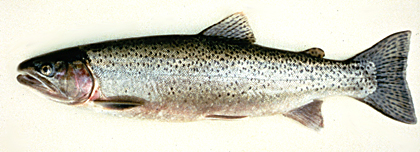Provisions in the Corps’ on-board larder had dwindled considerably by the time they reached “the forks of the Jefferson.” They had but little of their salt meat left, and only a few remnants of the corn they had departed Fort Mandan with. Near Fortunate Camp on 19 August 1805, three of hunters bagged two deer, while several of the men caught some nice, large westslope cutthroat trout.
Some of the other men, according to Private Whitehouse, “halled the fish net across the river but caught none any other way but with a hook & line.” Hook-and-line fishing was mediocre the next day also, and the hunting was worse. On 22 August 1805, however, their luck changed when the Indians—”verry kind and friendly”—helped them make a fish-drag out of willows. They “tyed bunches of them together and made it long enofe to reach across the River, and Caught with it 520 different kinds of fine pan fish.” Obviously he meant 520 fish of different kinds, of such size as two or three would fit nicely in a frying pan. “We divided them with the natives,” he continued, and “Gave them a mess of boiled corn which they were fond of.”
Lewis had first seen this fish when Private Silas Goodrich caught half a dozen at the Great Falls of the Missouri on 13 June 1805. He observed that these fish:
precisely resemble our mountain or speckled trout in form and the position of their fins, but the specks on these are of a deep black instead of the red or goald colour of those common to the U.’ States. these are furnished long sharp teeth on the pallet and tongue and have generally a small dash of red on each side behind the front ventral fins; the flesh is of a pale yellowish red, or when in good order, of a rose red.
In 1836 the Scottish surgeon and naturalist, John Richardson (1787-1865), gave it the official name Salmo clarkii (SAL-mo CLARK-ee-eye). It has since been renamed Oncorhynchus [Greek for “hooked-nose”] clarki. It is commonly called westslope cutthroat trout.
There have never been any other Pacific salmon

